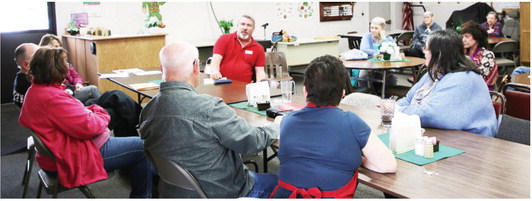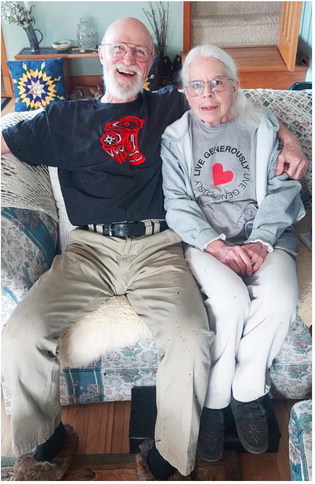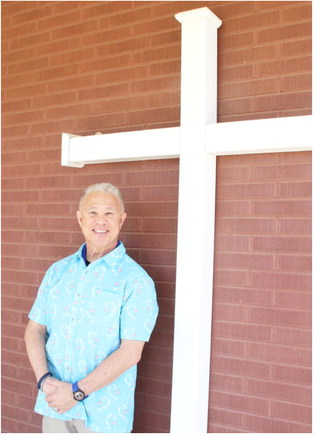Aging In Place, With Help From A Local Who Knows The Ropes


Building Community From The Inside
Seeley Swan Pathfinder
“His mobile home was not livable,” said Missoula Aging Services (MAS) Resource Specialist Linda Howard, about a client she worked with in Seeley Lake. This was not a problem Howard or MAS had the resources to address directly, but she knew people who did. With the help of a local church, community service organizations and neighbors, the client was moved into a new mobile home at no cost to him.
This story is not unique in Montana, where neighbors help neighbors and communities take care of their own. Still, connecting resources with needs is becoming more important as the number of Montanans who are 60 and older increases.
The Montana Area Agencies on Aging uphold a common mission to provide support and services that help seniors to age in place, at home, in their community.
To provide these services, each Area Agency employs a different model that is tailored to the area, its resources and available funding. Each Area Agency operates out of a central office, typically located in an urban center of its coverage area, which includes several counties.
Area agencies that have embedded trained, knowledgeable, local information assistants within their area’s rural communities have increased their ability to help aging rural Montanans. Taking it one step further, MAS has employed a resource specialist who not only provides information referrals, but also fosters relationships, builds connections and develops programs to match resources to community needs. This has built a network of support that increases MAS’ capacity and furthers its mission.
“There are numerous resources, both government and private, available to help with taxes, transportation, caregiving, retirement, housing, medical services and many other needs,” said Carla Schade, past president of the Seeley Lake Community Foundation. “However, knowing where to find these problem solvers and how to negotiate their sometimes- complicated access can be extremely difficult and time-consuming. By having someone here in our community with the training and expertise to assist people, many situations can be addressed and often solved.”
Montana Agencies On Aging
The Older Americans Act of 1965 established the U.S. Administration on Aging and the state Agencies on Aging to address the social service needs of older citizens. In Montana, the Aging Services Bureau of the Senior and Long-Term Care Division of the Department of Public Health and Human Services administers federal grants and any additional funds authorized by the state Legislature.
The Aging Services Bureau contracts with 10 Montana Area Agencies on Aging, which in turn contract with service providers in their Planning and Service Area. They utilize federal, state and other funding allocated by counties, grants or independent donations to provide services for residents age 60 or older.
Most of the services are free, though donations are accepted. Services include:
•Food and nutrition services, including home delivered meals and congregate meals at Senior Centers
•Information and advocacy services for programs including an Aging and Disability Resource Center, long-term care ombudsman, State Health Insurance Assistance Program (SHIP), legal services assistance, and the Montana Lifespan Respite program
•Medicaid navigation assistance
•Community services including Community First Choice, personal assistance services, the Big Sky Waiver program, home health services and hospice
•Nursing facilities, veterans services and adult protective services In the 2019 fiscal year, Montana Area Agencies on Aging served 15,594 clients, less than 13 percent of the state’s over-65 population. SHIP counselors saved Medicare beneficiaries more than $5 million by comparing Medicare Part D plans.
As the state’s aging population continues to increase, area aging directors point to funding as the biggest limitation on their ability to meet clients’ needs, saying federal funding has not kept pace with the increase in service demands. The problem is amplified in rural areas because per capita costs for goods and services are higher.
“Ultimately there needs to be some new options on how we are going to serve those most isolated people,” said Todd Wood, executive director of the Area VI Agency on Aging in Polson.
“We can’t be urban-centric and make things work in Montana,” said Jim Marks, the Area IV Agency on Aging program director in Helena. “You need to be very integrated and implemented to find the solutions to age in place.”
Marks and Wood said they employ Information and Assistance/State Health Insurance Program counselors across their areas. The counselors provide information and help clients navigate available resources.
Marks said Area IV contracts with embedded I&A/SHIP counselors in Meagher and Park counties.
Meagher County has the highest percentage of clients in Area IV, with more than 25 percent of the 60-and-older population served in 2016 and 2017, compared to 17 percent in Gallatin County and less than 10 percent in Area IV’s other four counties, including Park County.
Marks suggested that Meagher County is a participation standout because residents collaborate well and services are contracted through a single nonprofit, the Meagher County Senior Center. In Park County, senior services are contracted through three separate organizations.
“Improved services and better coverage would likely follow consolidation of services in Park County,” Marks said.
Area VI employs nine I& A/ SHIP counselors, four of whom are located in its central office in Polson. Whenever possible, the counselors are hired from within the rural community they serve and have full access to training and resources available in Polson.
The number of clients in each of Area VI’s counties has increased almost every year since 2007. Between 2016 and 2018, Area VI served between 10 percent and 14 percent of the over-60 population in each of its four counties.
MAS has several I& A/ SHIP counselors across its two-county area. However, MAS CEO Susan Kohler decided to try something new when she was asked by the Seeley Lake Community Foundation to increase access to services for seniors in the Seeley-Swan.
Community Foundation executive director Anne Beach initiated discussions in 2015 to see how the foundation could make a targeted difference in the Seeley Lake community. She formed a focus group of local stakeholders to discuss ideas and generated a needs assessment, creating awareness and generating a project list with tangible goals. Through the discussions, the foundation learned that seniors either could not or did not want to travel the 60 miles to Missoula for an appointment at MAS or talk to someone they didn’t know on the phone. Distance was an even bigger barrier for seniors living in the Swan Valley, 90 miles from Missoula.
Kohler agreed to hire someone part-time to work in Seeley Lake. Implementation of the idea required innovation, creativity and community buy-in, as well as funding. The Seeley Lake Community Foundation provided office space and the Swan Valley Community Foundation financially supported the position. MAS advertised for someone local with a background in social work or health care who was technologically savvy and could relate well with the community.
Howard was one of a handful of applicants. Her family has owned a place in the Swan Valley since 1931, which she frequented during summers and holidays. She had a background in health care and was a Medical Service Corps officer in the U.S. Air Force. She holds a master’s degree in health systems management and a certificate in health informatics. She had also been a caregiver for her mother for more than 11 years.
“We were lucky with Linda because she had all that background,” Kohler said.
In October 2016, Howard started as a part-time resource specialist in the MAS branch office in Seeley Lake, which she named the Seeley Swan Resource Center. She received six weeks of training and was supported by MAS with technology, ongoing training and weekly check-ins with the MAS office in Missoula.


